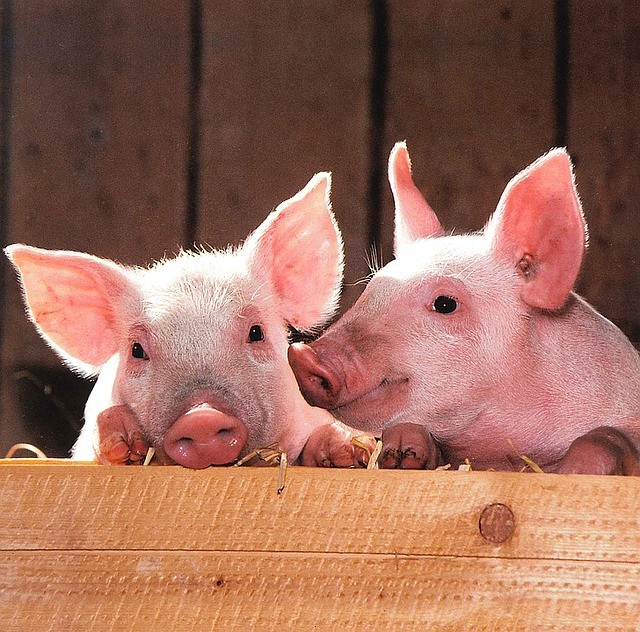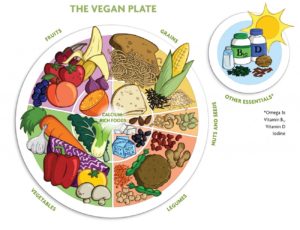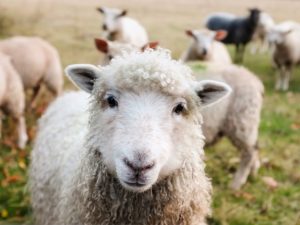Thinking of going vegan – an introduction

Introduction to becoming vegan – Case Study
Your Step by Step Guide
Whilst studying for this vegan and vegetarian course with Luna Holistics, my husband (JJ) agreed to be my case study. JJ stated that he would never stop eating meat and diary products. JJ is 42 years old, disabled and weighs 22 stone. JJ feels unhappy with his weight gain since his meningitis episode. JJ has tried numerous diets over the years but unsuccessfully so. Usually when JJ diets he initially loses a stone or 2 but then soon after his diet, his weight comes back and often more than it was before the diet.
Whilst I was studying, reading, watching educational videos and conversing about veganism and vegetarianism, JJ showed interest and his “I will always eat meat” opinion began to erode. JJ began to consider the idea of changing his diet for life.
This case study aims to show how changing to a vegan or vegetarian diet will have many health benefits. I hope to help people meet their personal health goals, to have a more positive wellbeing and to be able to remain on the path of positive change.
I intend to show how JJ’s changes in his diet have been positive, realistic and achievable on a long-term life changing basis.
Initial Consultation
JJ and I completed the treatment card questions as provided. During this continuous process of change, we have this card as a reference to monitor how the treatment is progressing.
Prior to this consultation, JJ and I watched many documentaries about veganism and vegetarianism. Both JJ and I read about the subject and as a result of this research, JJ made a positive proposition and asked if he could become vegan and how to do so. During this process, I also started to consider becoming a vegan.
Diet Research (Vegan Focused Due To JJ’s Preferred Choice Of Diet)
Whilst having a vegan or vegetarian diet, there are many positive healthy effects.
There are a multitude of proteins from a variety of products, such as tofu, quinoa, lentils, beans, peas, grains, seeds, nuts, pulses, legumes, spinach, artichoke, avocado, brussels sprouts and many more.
With a vegan diet there are many opportunities to obtain a healthy level of vitamins and minerals, because of using a variety of fruit and vegetables in the diet. To supplement the lack of vitamin B12 due to not eating animal products, both JJ and I take one vitamin B12 tablet daily.
A healthy diet needs healthy fats and a healthy amount of fat. We need unsaturated fats which are classified as monounsaturated and polyunsaturated fats.
On the www.govegandiet.com website it states that there are 850 monounsaturated fats. Monounsaturated fats are found in avocados, olives, olive oil, rapeseed oil, almonds, cashews, hazelnuts, peanuts, pistachios and spreads made from these nuts. Monounsaturated fats can help to maintain healthy cholesterol levels.
The British Heart Foundation state that polyunsaturated fats are found in foods such as, corn oil, sesame oil, soya oil, and spreads made from those oils, also flaxseed, pine nuts, sesame seeds, sunflower seeds and walnuts. In small amounts polyunsaturated fats help to maintain healthy cholesterol levels and provide essential fatty acids.
Carbohydrates are necessary in our diet because they are made of complex chains of sugars that the body breaks down into tiny glucose molecules that feed the cells, provide energy and promote cell stability. Carbohydrates are found in foods such as wholegrain, oats, bread, berries, pears, potatoes, broccoli, carrots, rice, beans, chickpeas, nuts and seeds and more. Excessive consumption of carbohydrates links to diabetes, heart disease, hypertension, obesity, colitis and cancer.
With a vegan or vegetarian diet, fibre is essential. There are two kinds of fibre which are soluble and insoluble, and we need both. Soluble fibre is found in foods like oat bran, flaxseed, psyllium husks and legumes. This type of fibre is partially broken-down during digestion, creating a gel that slows the absorption of foods through the intestinal walls.
Soluble fibre helps regulate blood sugar and has been shown to reduce low-density lipoproteins (LDL) – the bad cholesterol. Insoluble fibre is found in the skins of many fruits and root vegetables. It is also found in wheat bran and certain vegetables like cauliflower and green beans. Insoluble fibre in food helps to remove toxins from your system, balance intestinal pH and move waste along easily through the colon.
One needs to consume about 25 – 40 grams of fibre per day. Most people on a standard diet are only getting about 10 grams of fibre per day because of the large amount of animal products in their diets. Animal products contain no fibre at all.
Fibre is found in fruit, vegetables, seeds, nuts and more. Becoming a vegan and vegetarian automatically sets you up to consume more fibre for healthy digestion and a healthy body.
As recommend by www.nhs.uk, we should drink at least 6 to 8 glasses of water per day.

With a vegan diet you can eat when you feel hungry. The stomach feels fuller and more satisfied on a plant-based diet when compared to a diet including animal-based food and drink.
Shopping
Now both JJ and I are vegan, we have changed our shopping purchases and we consciously make sure that we have a variety of food to meet our nutrition needs.
We buy (Staple Ingredients) for our cupboard, refrigerator and freezer. These ingredients are:
Cupboard Staples
- Baked Beans
- Chickpeas
- Kidney Beans
- Sweetcorn
- Chopped Tomatoes
- Tomato Puree
- Onions
- Spices
- Herbs
- Rice
- Pasta
- Quinoa
- Mushroom Powder
- Soy Sauce
- Olive Oil
- Sesame Oil
- Coconut Oil
- Seeds / Many Varieties
- Nuts / Many Varieties
- Potatoes
- Other Root Vegetables
- Lentils
- Non-Sweetened Chilli Sauce
- Salt & Pepper
- Vegetable Powder
- Nutrition Yeast
Refrigerator Staples
- Jarred Olives
- Jarred Gherkins
- Pickled Onions
- Soya Milk
- Almond Milk
- Tofu
- Bottles Of Cold Water
- Mushrooms
- Tomatoes
- Kale
- Celery
- Spinach
- Broccoli
- Olive Spread
- Asparagus
- Baby Corn
- Salad Leaves
- Berries
- Oranges
- Apples
- Peaches
- Avocado
- Garlic
- Ginger
- Fresh Herbs
Freezer Staples
- Peas
- Sweetcorn
- Spinach
- Blue Berries
- Raspberries
- Mango
- Pineapple
- Vegetable Based Burgers
- Vegetable Based Mince
- Vegetable Samosas
- Vegetable Fingers
Meal Planning
With consideration of the food choices that are best for a vegan diet, the following meal plans were devised. Please note that these are only a small sample of the multitude of options:
| Breakfast | Lunch | Dinner |
| Porridge with blueberries, toasted nuts and seeds with vegan milk | Home made vegetable soup with nutrition yeast and toasted wholegrain bread, served with olive spread and toasted nuts and seeds | Indian spices, kidney beans, mixed vegetables and firm tofu curry served with mixed brown rice and quinoa |
| Beans with wholegrain bread, olive spread and toasted nuts and seeds | Quinoa salad with avocado | Dried tofu with chickpeas and yellow bean sauce. Served with lentils or brown rice |
| Peanut butter and banana crumpets with toasted nuts and seeds | Vegan pizza with fresh salad leaves | Thai curry, with coconut milk, firm tofu, served with mixed brown rice and quinoa |
| Pancakes with blueberries, dates and golden syrup | Jacket potato with beans and vegan cheese | Air fried tofu, served with quinoa salad and avocado |
| Avocado and tomatoes on crusty wholegrain bread | Sweet potato hand cut chips with guacamole | Vegan lasagne, served with mixed vegetable and fresh salad |
| Snacks |
| Additional to the meal options, fruit can be an alternative to, or an addition to a meal |
| Vegetable fingers |
| Air fried kale |
| Air fried mushrooms |
| Air fried asparagus |
| Air fried baby sweetcorn |
| Toasted variety of seeds and nuts |
| Marinated extra firm tofu slices |
| Rice baked crisps |
| Homemade sweet potato and parsnip air fried chips |
| Continuously drink plenty of fluids, whilst limiting caffeine and sugar intake |

Animals (Ethics)
Alongside the personal (human focused benefits) of a vegan or vegetarian diet, the (animal focused benefits) are clearly improved by people changing to predominantly vegan but also vegetarian diets.
The cruel conditions that animals are experiencing are inhumane. Also, the process of “creating” meat products can often mean people are not aware of what is exactly in the product. In agriculture they are using more than 600 active chemicals for the process of rearing animals for food. Such products have been identified to be cancerogenic, as are many other meat-based products.

After watching a documentary on the culture of rearing, killing and processing animals for meat to eat, I was literally left feeling sad and sickened by the cruelty of the whole process. JJ watched the same documentaries as I did, and he was brought to tears.
Beyond concentrating just on the vegan diet, one needs to be aware of all non animal-based products. On a vegan diet, one needs to be aware of each and everything in his or her life, such as animal-based cosmetics, animal-based clothing, animal-based glues and any other animal-based products.
Donald Watson coined the term vegan in 1944 when he co-founded the Vegan Society in England. At first, he used it to mean “non-dairy vegetarian”, but from 1951 the society defined it as “the doctrine that man should live without exploiting animals”.
After watching and reading about animal cruelty, JJ and I both began to see the ethical dilemma of continuing to eat an animal-based diet and use animal-based products. Alongside the physical benefits of becoming vegan or vegetarian, subjectively we feel ethically and morally in a better place.
Environment (Climate – Wildlife & Deforestation – Water)
It has been proven that a person on an animal-based diet eats eleven times as much fossil fuel as is used as that of one calorie of plant protein consumed. Also, studies suggest that the diet of meat eaters creates seven times as much greenhouse gas emissions when compared to the diet of vegans.
Studies have shown that the planet cannot sustain the demand of animals for food, it is literally “killing” the earth. This is due to a rapidly expanding population and people who already eat meat and are now eating more.
Methane emissions and other toxic greenhouse gasses are massively increased due to the rearing of animals for food and animal-based products. This massive increase contributes to climatic changes. Climate change is real, scientifically proven by observations of rising sea levels due to melting glaciers and ice-caps and threatened worsening humanity than ever recorded previously.
Due to the current climate declining, studies are continuously supporting the facts that species of animals are disappearing at a massive and potentially increasing rate. There are many various reasons for the climate declining, one such reason is the process of clearing land of trees to create land which is for grazing stock for food and this is seriously a risk to wildlife species and is increasing exponentially.
The raising of animals for food take up 8% of the global water supply. This is considered to be the major contributor to water pollution and also for dead water zones, coral loss, the spread of disease and more. The pollution comes mainly from animal wastes, the use of antibiotics and hormones, a cacophony of chemicals from tanneries plus the pesticides and fertilisers used on the crops to feed the animals.
Conclusion (Feedback)
In the past 2 years, JJ’s GP has prescribed medications to help with weight loss but due to being disabled, JJ is unable to move freely, which has hindered his progress. JJ was a person who always wanted meat with every meal, in his own words “I feel upset when I don’t eat my meat”. To be honest, prior to this course, I never thought that JJ would be open to change with respect to his diet.
During the process of studying and applying my new knowledge base of veganism and vegetarianism, sadly, JJ has been diagnosed with diabetes. Positively, now is the opportune time for JJ to change to his new vegan diet. Now JJ will have a far better opportunity to manage his diabetes, reduce the risks of harm that can come from a diagnosis of diabetes and reduce the risks of having other chronic diseases. It is clear to see that JJ has lost weight over this past 2 months and this is especially noticeable by his reduction of body fat and particularly the excess fat around his face.
By not eating animal-based products, the 600 plus active chemicals will not be ingested and therefore to eat either vegan or vegetarian options is healthier by far.
It has been very rewarding to witness the positive change in both my own diet and JJ’s diet. We both feel more energetic, positive in mood and satisfied. Satisfied because whilst on a vegan diet, there are a multitude of food options, hunger is rarely an issue, and this has previously been the major factor in JJ not being successful on other diets.
I subjectively feel confident that both vegan and vegetarian diets are positive and will help anybody reach a healthier state of wellbeing. People whom suffer with obesity can also have low self-esteem and be low in mood, which can lead to inactivity and poor life choices. Changing to a vegan or vegetarian diet can improve mood but also motivate people to be more active due to having more energy because all nutritional needs are met.
When covering vegetarian and vegan material and learning about the negative effects of carnivorous diets, it has been an unexpected emotional experience. If we humans continue to eat as the populous do, our animals will be continuously treated with cruelty, the forests and our climate will weaken exponentially and there will be an incline of obesity and chronic diseases through the generations to come.

As a final note, JJ has just had an appointment with his GP and his GP was very supportive of becoming a vegan and he noted that he could see the weight loss and see that JJ has a more positive attitude.
JJ and I are proud to be vegan!
(latest feedback) from JJ himself.
This is just a short note because 3 months ago I was diagnosed as a diabetic and my blood pressure was very high. Today, I had my diabetes appointment and both my blood sugar levels and my blood pressure have decreased significantly. So, thank you for offering this course!
Source: (Student Case Study)
Find out more about the Growing Vegan Industry
Find out why the avocado is a uniquely healthy fruit and one well worth eating regularly – find out more at Superfoods
The post
Post views: 1172